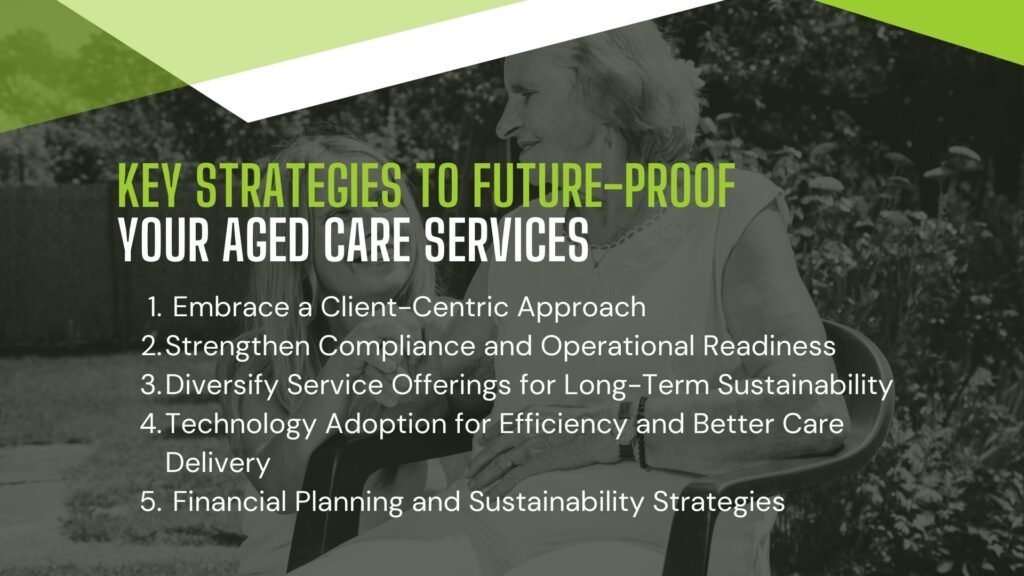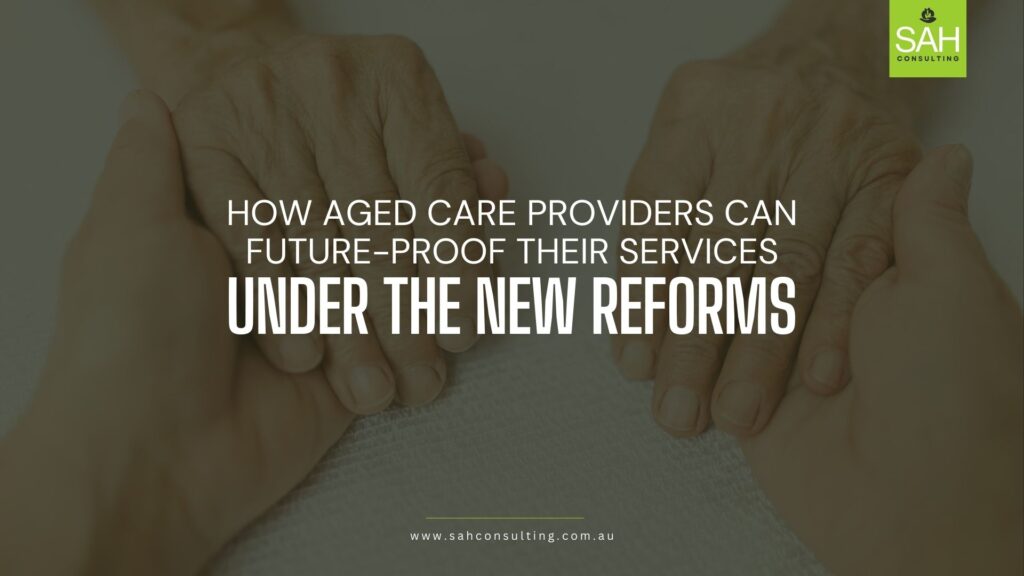Australia’s aged care system is undergoing major reforms to support older Australians in living independently at home for longer. The Support at Home Program, launching 1 July 2025, will replace the Home Care Packages and Short-Term Restorative Care Programme. It introduces a new structure with eight care levels, aimed at providing more personalised and flexible care. The Commonwealth Home Support Programme will transition by 2027.
To remain competitive and sustainable, aged care providers must future-proof their services. The aged care reforms: a guide for providers outlines key changes that will impact how services are delivered, including new compliance standards, funding structures, and service adjustments. Providers who adapt early will be better positioned to navigate these shifts and continue offering high-quality care.
Understanding the Support at Home Program and Its Impact
The Support at Home Program introduces fundamental changes which affect the entire in-home aged care sector. All existing aged care programs, including Home Care Packages and Short-Term Restorative Care Programme, will integrate under a unified system.
The introduced modifications will affect aged care providers profoundly. Approved standards and reporting criteria will receive updated requirements and new accreditation regulations. The new care system demands providers to alter their services for different treatment requirements at each of the eight care levels while requiring them to handle fund distribution based on patient care needs. The in-home aged care reforms demand providers to develop detailed operational plans that ensure compliance while keeping their service delivery sustainable.
Key Strategies to Future-Proof Your Aged Care Services
1. Embrace a Client-Centric Approach
As the Support at Home Program rolls out, your ability to adapt services across the eight new care levels will be crucial. You’ll need to ensure that care plans are tailored to meet the unique needs of each client. A client-centric approach means integrating both clinical and non-clinical care, creating seamless, personalised experiences that go beyond just healthcare.
Using technology to enhance the customer experience is key. Digital tools can help with real-time feedback, care planning, and tracking progress, allowing you to better understand client needs.
2. Strengthen Compliance and Operational Readiness
The Aged care governance reforms are bringing new accreditation standards, and you’ll need to be ready to meet these head-on. Ensure that your systems and processes align with the updated regulations for funding eligibility, reporting, and compliance audits. This will involve streamlining documentation, improving data security, and preparing for quality assessments under the new framework. Make it a priority to stay ahead of compliance requirements. This could mean revising your policies, conducting internal audits, and investing in staff training.
3. Diversify Service Offerings for Long-Term Sustainability
Expanding your service offerings is a smart way to future-proof your business. With the introduction of new funding opportunities, like palliative care allowances and home modification grants, there’s potential to broaden your services. Home modifications—such as safety installations and mobility aids—are in demand, and providing these can help you tap into new revenue streams.
Building partnerships with healthcare professionals will also allow you to offer holistic care that goes beyond the basics.
4. Technology Adoption for Efficiency and Better Care Delivery
Technology serves as your operational efficiency tool to deliver superior health care services. A digital care management platform deployment enables better management of client data combined with scheduling and care plan administration. The tools enable you to work more efficiently and provide better care by minimising administrative work. Your ability to forecast client requirements along with your resource management will improve due to AI-based predictive analytics systems, and minimal resource waste will occur, resulting in better services.
5. Financial Planning and Sustainability Strategie
Adapting to the new means-tested client contributions under the Support at Home Program will require careful financial planning. You’ll need to reassess your pricing models, ensuring they remain competitive while maintaining the quality of care you provide. Cost efficiency will be crucial, but it’s important that it doesn’t compromise service delivery.
Make sure to keep an eye on available government grants and funding opportunities. The Changes to aged care in Australia booklet can help you navigate these funding sources and maximise the support you receive.

Registering for the Support at Home Program: A Seamless Transition with SAH Consulting
Registering for the Support at Home Program can be a challenging process, with new eligibility criteria and regulatory requirements to meet. At SAH Consulting, we simplify this process by guiding providers through the necessary steps, ensuring compliance, and helping with documentation to speed up approval. Our team is dedicated to reducing administrative burdens and ensuring a seamless transition, allowing you to focus on delivering high-quality care.
This aged care reforms: a guide for providers blog outlines the key changes, and we’re here to ensure you’re fully prepared. We encourage providers to act early and start the registration process now to secure eligibility before the program launch, avoiding any delays down the line.
Conclusion
In conclusion, staying ahead of the aged care reforms: a guide for providers is essential for ensuring your aged care services remain compliant, efficient, and sustainable under the new Support at Home Program. By embracing a client-centric approach, adapting to new regulatory standards, and leveraging technology and financial planning, you can future-proof your services and maintain a competitive edge.
Start preparing today and partner with SAH Consulting to ensure a smooth transition. Act now to secure your eligibility and lead in the evolving aged care landscape!
